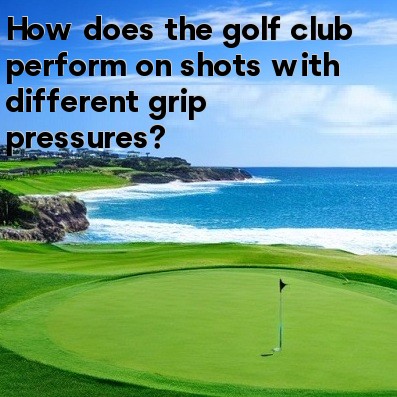
In golf, how does the golf club perform on shots with different grip pressures?
Grip pressure is one of the most crucial aspects of a golfer's swing. It plays a significant role in the way the golf club performs during shots. The way you hold the club and the amount of pressure you apply can impact the accuracy, control, and distance of your shots. Let's delve deeper into how the golf club performs with different grip pressures.
Light Grip Pressure:
- A light grip pressure means holding the club with minimal force. This grip allows for increased clubhead speed, promoting more distance potential. It enables the clubface to square up properly at impact, resulting in cleaner shots.
- However, a light grip can also cause the club to become unstable, leading to a loss of control. It requires practice to maintain a light grip while still having control over the club.
- Golfers who prefer a light grip pressure often feel more relaxed, allowing for a more fluid and natural swing.
Firm Grip Pressure:
- A firm grip pressure involves holding the club with a tighter grip. It provides a greater sense of control over the club and allows for more accurate shots.
- With a firmer grip, the golfer may sacrifice some clubhead speed, resulting in decreased distance potential.
- Golfers who tend to have a more aggressive swing may benefit from a firmer grip as it helps stabilize the clubhead through impact.
- However, excessive grip pressure can lead to tension in the hands, arms, and shoulders, negatively affecting the swing motion.
Variable Grip Pressure:
- Many golfers prefer a variable grip pressure, adapting their grip based on the specific shot or situation they are facing.
- For example, on shorter shots that require more finesse and touch around the green, a lighter grip pressure can be beneficial to promote a softer impact.
- On the other hand, for longer shots that require more power and control, a firmer grip pressure may be preferred to maintain stability.
- Adopting a variable grip pressure allows golfers to optimize their performance based on the demands of each shot.
The Bottom Line:
Grip pressure is a fundamental element that affects the performance of the golf club during shots. While a light grip pressure can increase clubhead speed and potential distance, it requires practice to maintain control. A firmer grip pressure provides more control and accuracy but may sacrifice some clubhead speed. Many golfers find success with a variable grip pressure, adapting based on the specific shot at hand. Ultimately, finding the optimal grip pressure for your swing and shot requirements will lead to improved performance on the golf course.
Remember, your grip pressure is just one piece of the puzzle in golf. Other factors such as swing mechanics, body positioning, and mental focus also contribute to your overall performance. It is essential to work on all aspects of your game to become a well-rounded golfer.





